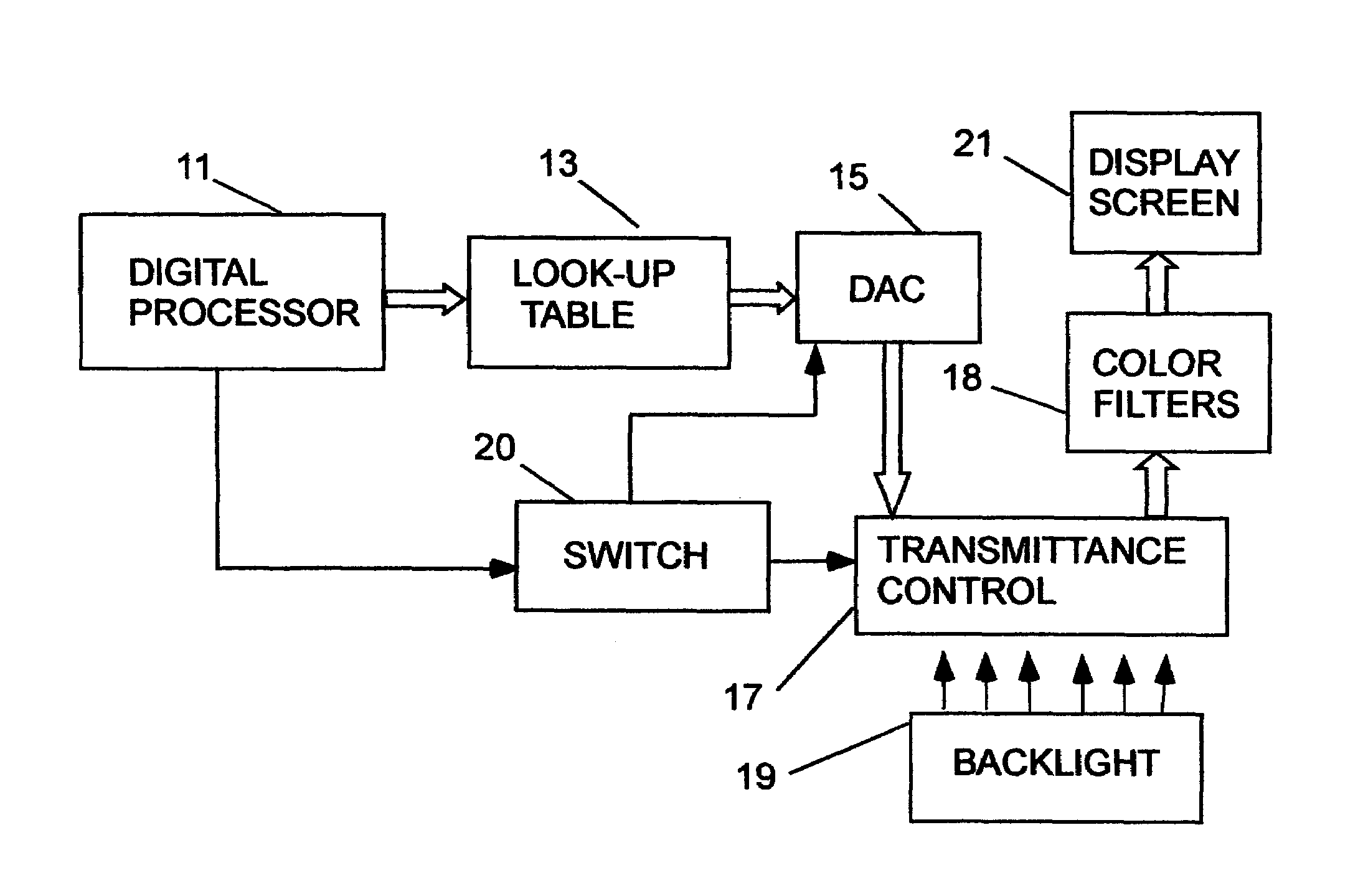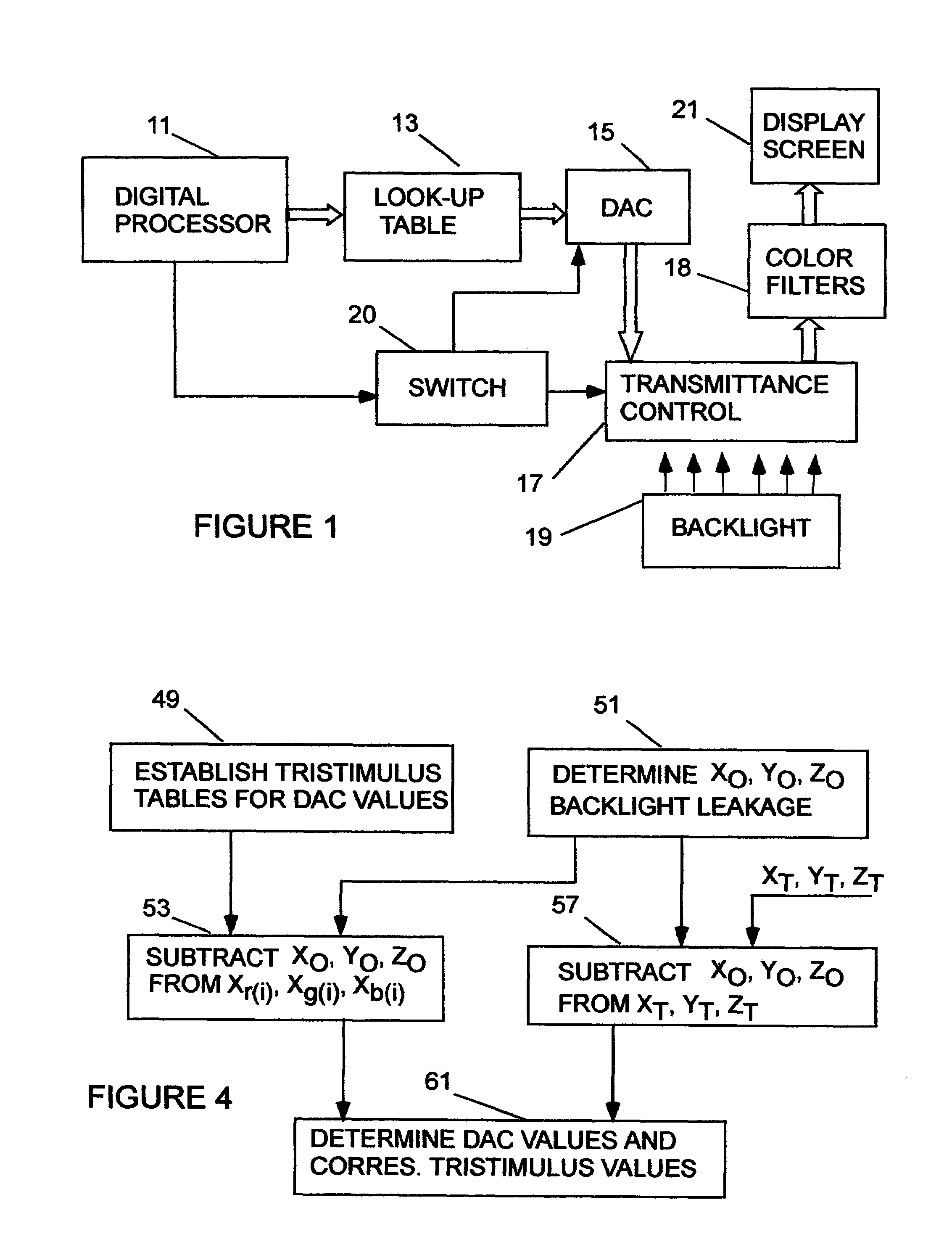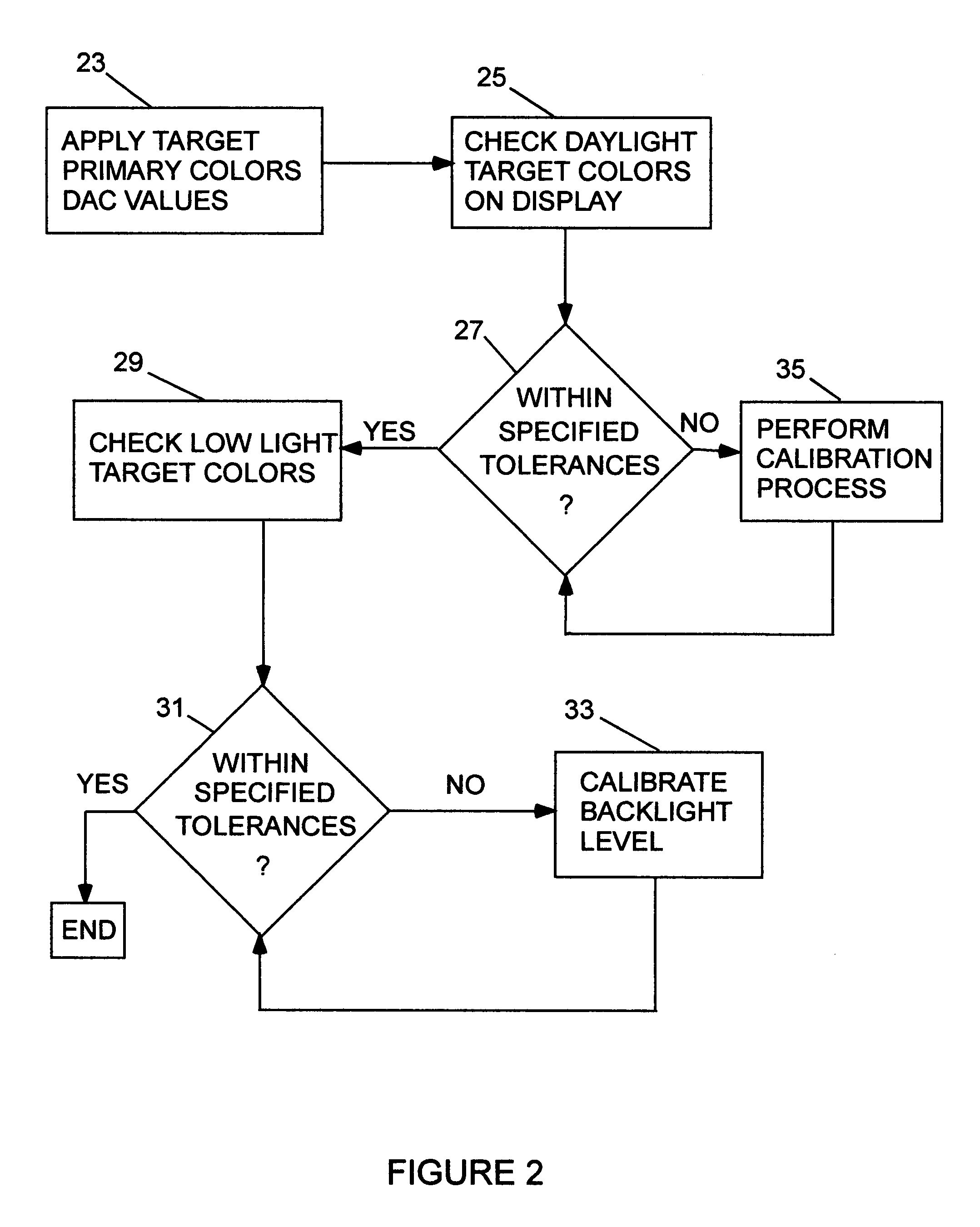Method of color calibration for transmissive displays
a color calibration and transmissive technology, applied in the field of transmissive displays, can solve the problems of inability to achieve the proper addition of primary colors, prior art calibration methods can fail to achieve specified accuracy of chromaticity and luminance, and high cost of setting-up and maintaining, and achieves accurate colors and high contrast
- Summary
- Abstract
- Description
- Claims
- Application Information
AI Technical Summary
Benefits of technology
Problems solved by technology
Method used
Image
Examples
Embodiment Construction
[0018]As shown in FIG. 1, a flat panel transmissive display system may include a digital processor 11 wherein the ambient light conditions and desired colors to appear on the screen of the system are determined. For each such color a DAC look-up table 13 is used to determine the DAC values required to produce the desired color. Digital signals (DAC values) representative of the luminance of the respective primary colors are coupled from the look-up table 13 to a digital-to-analog converter (DAC) 15 wherein the respective digital signals are converted to corresponding analog signals. The use of a DAC look-up table is not limiting. The digital signals may be coupled to any converter device appropriate to the display interface employed, ie digital serial, parallel, MUX, etc. These signals, which respectively represent the relative luminance of the primary colors, are respectively coupled to a light transmittance control 17 positioned at each pixel that provides the light intensities of...
PUM
 Login to View More
Login to View More Abstract
Description
Claims
Application Information
 Login to View More
Login to View More - R&D
- Intellectual Property
- Life Sciences
- Materials
- Tech Scout
- Unparalleled Data Quality
- Higher Quality Content
- 60% Fewer Hallucinations
Browse by: Latest US Patents, China's latest patents, Technical Efficacy Thesaurus, Application Domain, Technology Topic, Popular Technical Reports.
© 2025 PatSnap. All rights reserved.Legal|Privacy policy|Modern Slavery Act Transparency Statement|Sitemap|About US| Contact US: help@patsnap.com



